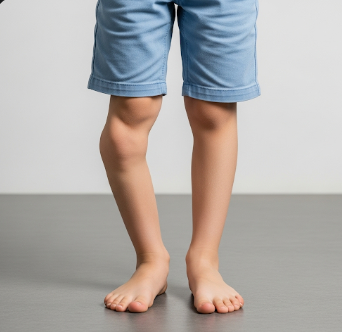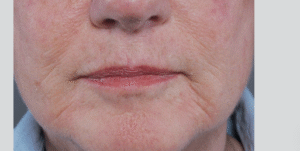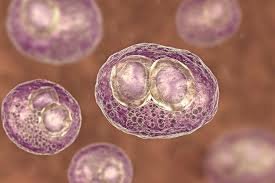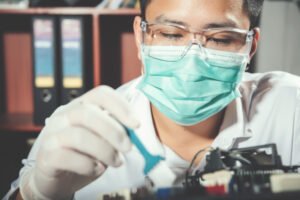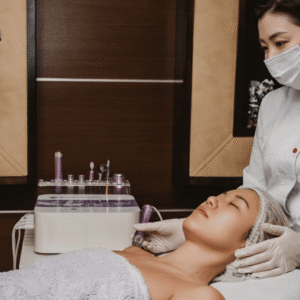Overview
Blount’s disease is a growth disorder of the shin bone (tibia) that causes abnormal bowing of the legs, primarily affecting young children and adolescents. The condition results from impaired growth at the medial part of the proximal tibial growth plate, leading to progressive deformity if untreated.
In Korea, Blount’s disease is recognized early through pediatric orthopedic screenings and advanced imaging techniques, allowing for timely intervention. Treatment options range from non-surgical bracing to corrective surgery, depending on the severity and age of onset. Korean hospitals provide multidisciplinary care, including orthopedic surgeons, physiotherapists, and rehabilitation specialists, ensuring optimal outcomes for affected children.
What is Blount’s Disease?
Blount’s disease is a disorder of bone growth in the tibia, characterized by bowing of the lower legs that worsens over time. It is different from normal “bow legs” (physiologic genu varum), which typically correct naturally as a child grows.
There are two main forms:
- Infantile Blount’s disease: Occurs in children under 4 years old, more common in early walkers
- Adolescent Blount’s disease: Occurs after age 10, often more severe and resistant to bracing
The disease can affect one leg (unilateral) or both legs (bilateral) and may lead to knee pain, gait abnormalities, and long-term joint problems if left untreated.
Symptoms
Symptoms vary by age and severity:
- Visible bowing of the legs, especially below the knees
- Uneven leg lengths in some cases
- Knee pain or discomfort during walking or running
- Abnormal gait or waddling walk
- Progressive worsening of leg deformity over time
- Early signs of joint stress in severe cases
Parents often notice the bowing when the child begins walking, and symptoms may worsen as the child grows.
Causes
The exact cause of Blount’s disease is multifactorial, involving genetic, mechanical, and environmental factors:
Genetic predisposition:
- Family history may increase risk, particularly in certain populations
Mechanical factors:
- Early walking and excessive weight on growing bones may contribute to abnormal tibial growth
- Obesity in young children increases stress on the growth plate
Environmental factors:
- Nutritional deficiencies or metabolic disorders affecting bone growth
The combination of mechanical stress and growth plate vulnerability leads to progressive tibial deformity.
Risk Factors
- Age: Early walkers are more susceptible to infantile Blount’s disease
- Obesity: Excess body weight increases pressure on tibial growth plates
- Family history: Genetic predisposition to skeletal growth abnormalities
- Ethnicity: Higher incidence reported in certain populations, including African descent
- Rapid growth periods: Growth spurts during childhood or adolescence can exacerbate deformity
Complications
If left untreated, Blount’s disease can lead to:
- Severe bowing of the legs causing cosmetic and functional concerns
- Uneven leg lengths and gait abnormalities
- Knee joint instability or early osteoarthritis due to uneven load distribution
- Chronic pain and difficulty participating in physical activities
- Psychosocial impact on children due to appearance and mobility limitations
Prevention
While Blount’s disease is not entirely preventable due to genetic and growth factors, certain measures may reduce severity:
- Maintaining healthy body weight in early childhood
- Regular pediatric check-ups to monitor leg alignment during growth
- Early intervention for abnormal gait or leg deformity
- Nutritional support ensuring adequate calcium and vitamin D for bone health
- Prompt referral to pediatric orthopedic specialists if bowing persists beyond normal physiologic limits
Treatment Options in Korea
Diagnosis
Korean hospitals utilize advanced diagnostic tools for Blount’s disease:
- Physical examination: Observation of leg alignment, gait, and knee range of motion
- X-rays: Assess tibial deformity and growth plate involvement
- MRI or CT scans: Evaluate bone structure and rule out other conditions
- Growth monitoring: Serial imaging to track progression over time
Non-Surgical Management
- Bracing: For mild cases in young children (usually under 3–4 years old)
- Knee-ankle-foot orthoses (KAFOs) guide tibial growth and reduce deformity progression
- Weight management: Reducing mechanical stress on the growth plate
- Physical therapy: Strengthening muscles around the knee and improving gait
Surgical Management
Surgery is recommended for moderate to severe deformities or older children/adolescents:
- Osteotomy: Cutting and realigning the tibia to correct bowing
- Guided growth surgery: Temporary implants to correct growth plate direction in younger children
- External fixation: Gradual correction of severe deformities using adjustable frames
- Postoperative rehabilitation: Physical therapy to restore mobility, strength, and gait
Supportive Care
- Continuous follow-up with pediatric orthopedic specialists
- Pain management during recovery
- Monitoring for recurrence or progression, especially during growth spurts
- Counseling for parents regarding treatment adherence and expectations
Prognosis
The prognosis for Blount’s disease in Korea depends on age at diagnosis, severity, and adherence to treatment:
- Early detection and bracing often result in full correction without surgery
- Surgical intervention in older children or severe cases typically provides excellent functional and cosmetic outcomes
- With modern orthopedic care in Korea, children with Blount’s disease can achieve normal leg alignment, gait, and active lifestyle participation
- Ongoing monitoring ensures early detection of any recurrence or complications during growth

